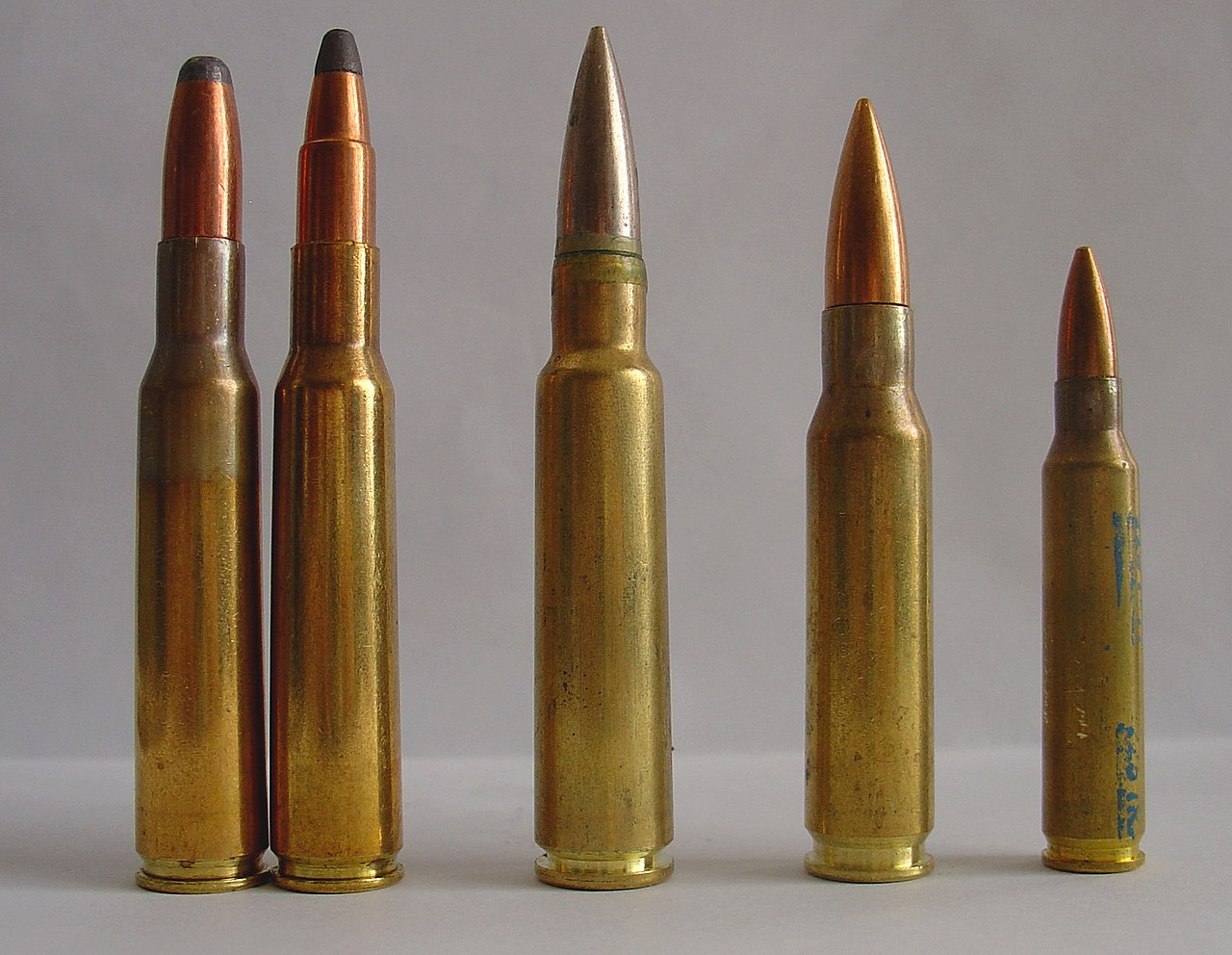The other round coming on line around the same was the 7.5 Swiss, which clearly impressed that nation's business partners (almost everyone had a 30cal of similar performance by the start of WWII). Very, very, very similar to a more squat 30-06, or up-scaled 7mm. I think the likely explanation is coincidence, with several independent designers optimizing new technology around the same goal ("kill a horse at the very edge of visual range")
The Swiss round's success was not so much due to the caliber or power which were similar to others, so much as the VLD spitzer bullets introduced around the same time as decent smokeless powders. Given most brass' lack of aerodynamics knowledge, I could see many thinking the heavier bullet & larger caliber was the reason for range/acccuracy in wind.

As you can see, the 7x57 on the left essentially perfected what we know as the modern bottle-neck case right out of the gate*, the simultaneous 8x51 Lebel was the first to use modern pointed bullets (but from a highly tapered/rimmed case ill-suited for magazine-fed repeating or self-loading firearms), but the 7.5 Swiss was among the first to combine the two to create an essentially "future-proof" cartridge that served into the 80's across a slew of weapon systems. Supposedly the Swiss spitzer bullet tech was the inspiration for both 8mm Mauser and 30-06 (and obviously all the others), but of course there was so much cross-pollination going on between designers in Europe and the US that I imagine it's hard to pin down exactly who of the cutting-edge shops was actually at the front (particularly the Swiss/German ones)
Like I said, there was something of a scientific revolution going on all over Europe and the US as alloy steel metallurgy, nitration chemistry, aerodynamics were being explored and applied under the scientific method (i.e. the birth of engineering), and between the cross-communication of the figures involved and the nature of engineering optimization, many different places arrived at similar conclusions simultaneously...and immediately set out to test them.**
TCB
*The case head & rim dimensions of the Mausers are suspiciously identical to 30-06, so I feel it could be argued that the 308 NATO we use to this day is essentially its progeny
**It's probably hard for us today to truly appreciate the mind-blowing advances occurring during this time in everything from guns to machinery to industry to agriculture to medicine. The people of the major powers involved in WWI probably did feel these developments made them unstoppable, and morally superior to opposing forces who could not be assumed to be matching such a rapid pace of development. As we know, the generals and heads of state were even more delusional about their prospects.
In the end, all sides involved in the war learned that industrial capacity had far outpaced human capacity to survive in conflict, and that more refined and focused tactics were needed if anyone was to ever win a war again. WWI saw thousands of howitzers firing millions of shells day after day with nothing to show for it but freshly-plowed No Man's Land, WWII saw mere thousands of bombs dropped on cities & industrial facilities cripple entire nations, Vietnam saw carpet bombing directed primarily toward actively hostile forces to support ground troops near by, then smart bombs & eventually today's combination of targeted airstrikes & real-time intelligence gathering/dissemination. Each subsequent world conflict has seen a similar refinement and reduction of actual combat operations, to the point of being a double-edged sword; while the horrors and sacrifice of warfare are shielded from the vast majority of our society, we are at the same time losing our fear of it as well as the capacity to participate should it ever become necessary.
"It is good that war is so terrible, lest we should become too fond of it" --R E Lee
No wonder the survivors of The Great War were convinced it was the last that would ever be fought.


